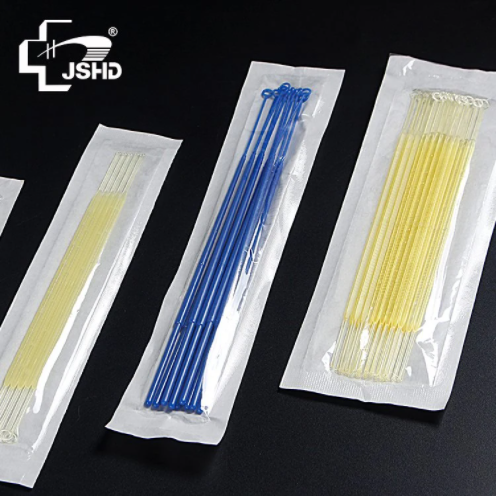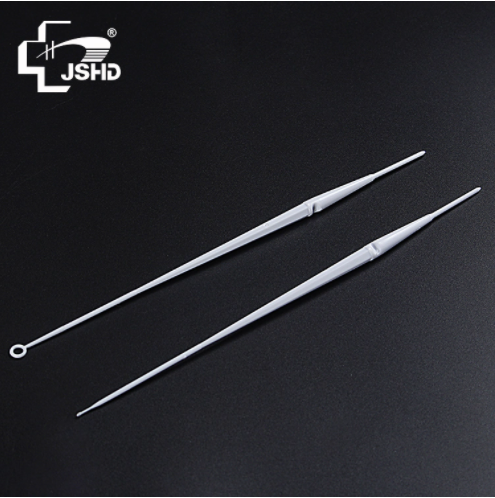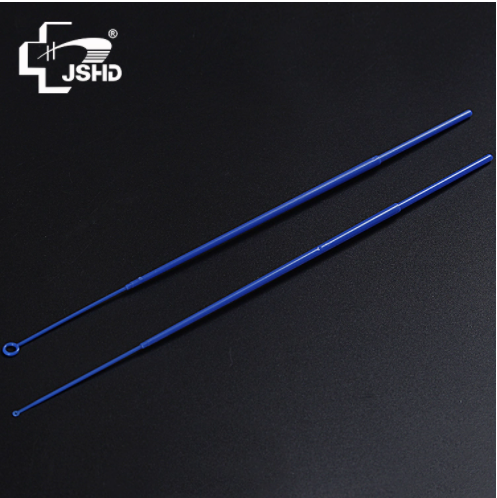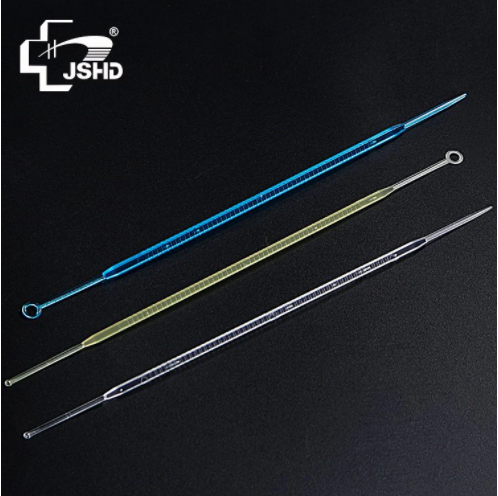Introduction:
Inoculation ring is a commonly used laboratory tool in life science experiments, utilized in various disciplines such as microbial detection, cell microbiology, and molecular biology. It offers precision and convenience during the transfer of samples. In this article, we will focus on the disposable sterile inoculum ring and explore its eight advantages along with a comprehensive product description.

Advantages of Disposable Sterile Inoculum Ring:
1. Sterility Assurance: The first and foremost advantage of a disposable sterile inoculum ring is its guaranteed sterility. Each unit is thoroughly sterilized using advanced techniques, minimizing the risk of contamination during experiments.
2. Elimination of Cross-Contamination: Disposable sterile inoculum rings prevent cross-contamination between samples. Unlike metal inoculum rings, which require meticulous cleaning between uses, the disposable variant ensures minimal risk of carry-over between different samples or experiments.
3. Cost-Effective: Disposable sterile inoculum rings eliminate the need for repeated sterilization and cleaning. This not only saves time and effort but also reduces operating costs in the laboratory.
4. Convenience: The lightweight and compact design of disposable sterile inoculum rings make them easy to handle and transport. They are ready-to-use immediately, thereby streamlining experimental procedures and enhancing efficiency.
5. Safety: As disposable sterile inoculum rings are made from polymer material polypropylene (PP), they eliminate the risk of injury compared to the sharp metal inoculation rings. The risk of accidental pricks or cuts is minimized, ensuring a safer working environment.
6. Hydrophilic Surface: Disposable sterile inoculum rings undergo a special treatment that provides them with a hydrophilic surface. This property allows for better adherence of samples, making the transfer process even more precise and accurate.
7. Wide Range of Applications: Disposable sterile inoculum rings find utility in a range of scientific disciplines such as microbiology, molecular biology, and cell culture. They can be used with various sample types, including bacteria, yeast, and other microorganisms.
8. Environmental Friendliness: Disposable sterile inoculum rings are made from recyclable polypropylene (PP) material, making them environmentally friendly compared to metal inoculation rings. They contribute to reducing plastic waste in the long run.

Product Description:
The disposable sterile inoculum ring is manufactured using high-quality polypropylene (PP) material, ensuring its durability and sterility. Each unit undergoes a rigorous sterilization process, making it suitable for aseptic laboratory procedures.
The hydrophilic surface of the inoculation ring enhances its sample pick-up capabilities, providing precision and accuracy during transfers. The ring is lightweight, compact, and easy to handle, making it ideal for repetitive use in a laboratory setting.
Disposable sterile inoculum rings are available in various sizes, accommodating different experimental requirements. They are color-coded for easy identification and can be purchased in convenient packaging options to ensure ease of storage and organization.


Conclusion:
The disposable sterile inoculum ring offers numerous advantages over the traditional metal variant. Its assured sterility, elimination of cross-contamination, cost-effectiveness, convenience, and safety make it a preferred choice for scientists in the life science industry. With its hydrophilic surface and wide range of applications, this laboratory tool proves to be an essential component in various experimental procedures. Furthermore, its environmental-friendliness adds to its overall appeal. Consider investing in the disposable sterile inoculum rings to enhance the efficiency and accuracy of your laboratory experiments.
Post time: Jun-28-2023

